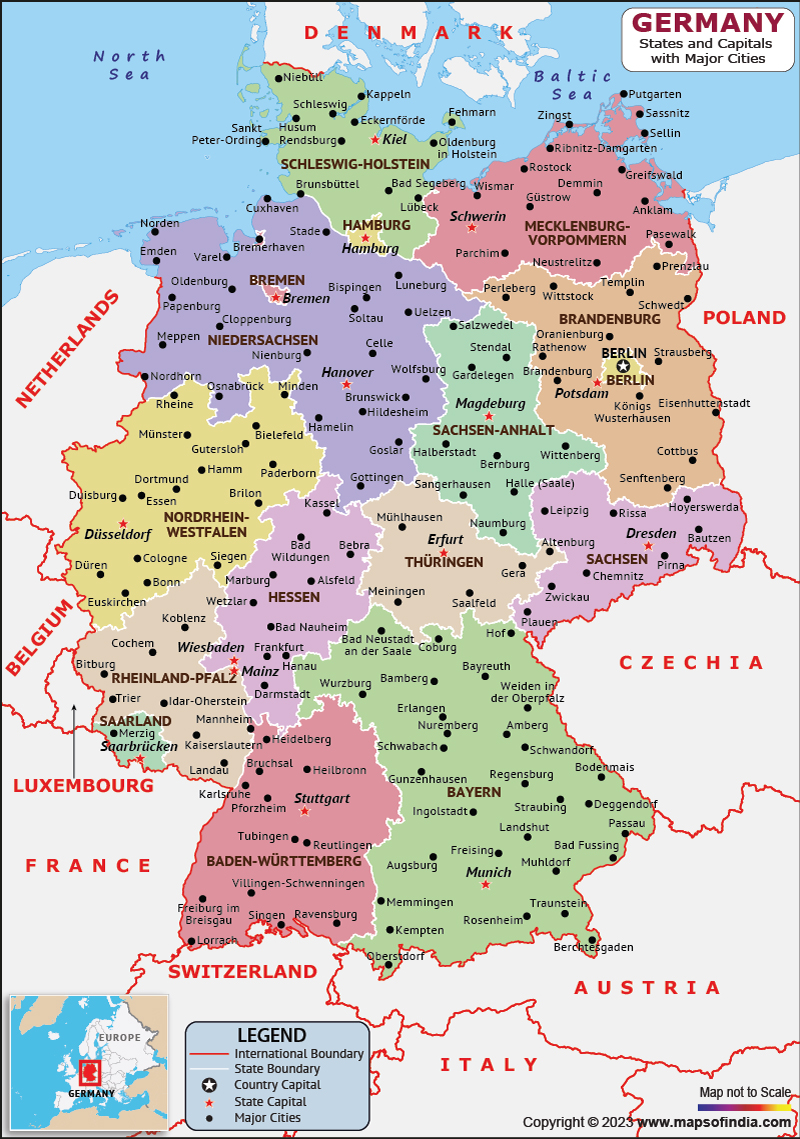Germany, or the Federal Republic of Germany, is a nation in Central Europe. Germany is situated between the Baltic and North seas to the north, and the Alps to the south; it covers an area of 357,022 square kilometers. Germany, the third-largest exporter in the world and one of the top producers of manufactured goods, sees more than a third of its GDP come from exports. Its national economy is the biggest in all of Europe and ranks fourth in the world in terms of nominal GDP.
Berlin, the capital and most populated city of the country, Frankfurt, the main financial hub, and the Ruhr, the country's largest urban area. It ranks third in both imports and exports as a global force in the industrial, scientific, and technological fields. It is ranked as the sixteenth most peaceful nation in the world as a result of its high level of development, placing ninth on the Human Development Index.
History:
A totalitarian dictatorship, World War II, and the Holocaust were brought about by the Nazi takeover of power in 1933. Following the end of World War II in Europe and a period of Allied occupation, in 1949, Germany as a whole was divided into two separate polities with limited sovereignties: the Federal Republic of Germany, also known as West Germany, and the German Democratic Republic, also known as East Germany. Berlin de jure maintained its Four Power status. While the German Democratic Republic was an Eastern Bloc communist state and a Warsaw Pact member, the Federal Republic of Germany was a founding member of both the European Economic Community and the European Union. Following the overthrow of the communist-led government in East Germany, the former East German states joined the Federal Republic of Germany on October 3, 1990, establishing a federal parliamentary republic.
Culture:
Germany is well known for its folk festivals and customs, such as the Oktoberfest and Christmas traditions, which include Stollen cakes, Advent wreaths, Christmas trees, and pageants. The movements of Neue Deutsche Welle, pop, Ostrock, heavy metal/rock, punk, pop rock, indie, Volksmusik (folk music), schlager pop, and German hip hop are examples of 20th- and 21st-century German popular music. Germanic architectural contributions include the Romanesque-inspired Carolingian and Ottonian styles.
Language:
German, or German Deutsch, is one of the official languages of Switzerland and is the official language of Austria and Germany. Along with English, Frisian, and Dutch, German is a member of the Indo-European language family's West Germanic division.
Geography:
Germany's latitudinal point is 51.1657° N. The nation's longitudinal coordinate is 10.4515° E. Germany has a diverse range of landscapes, including the high, cliff-like mountains in the south, the sandy, rolling plains in the north, the forested hills in the urban west, and the plains in the agricultural east.
| Official name | Federal Republic of Germany |
| Capital | Berlin |
| Population | 8.32 crores |
| Area | 357,588 km² |
| Language | German |
| Religion | Christianity |
| Currency | Euro |
| Major cities | Berlin, Hamburg, Munich |
FAQs
Q1.What is the official language of Germany?
German is the official language of Germany.
Q2. What is the capital of Germany?
Berlin is the capital of Germany.
Q3. What is the currency of Germany?
Euro is the currency of Germany.
Q4. What is the climate of Germany?
Germany is located in the region of the mid-latitudes with a temperate, rainy climate. Every year, the sun shines for approximately 1,544 hours.
Last Updated on: May 17, 2023
